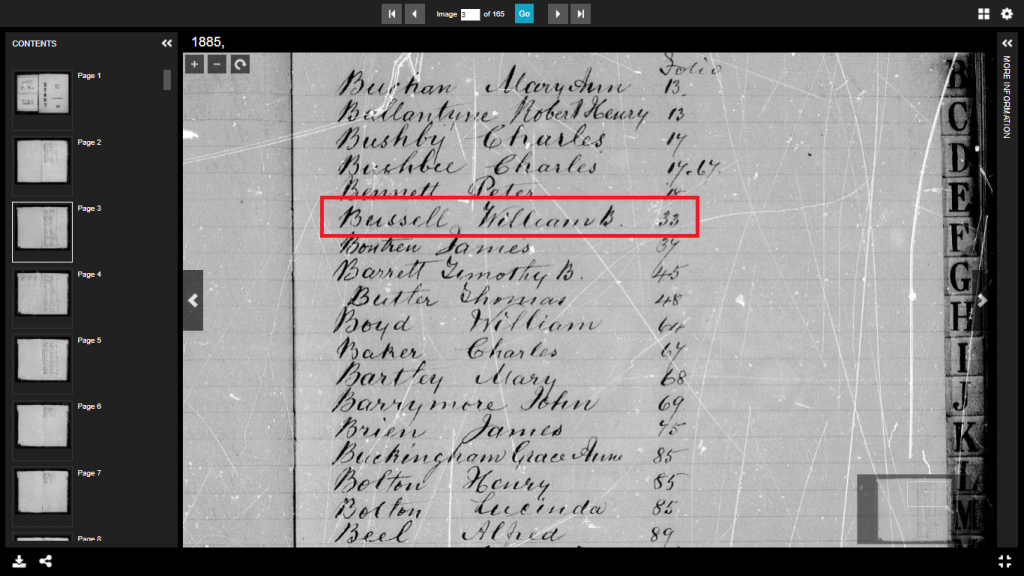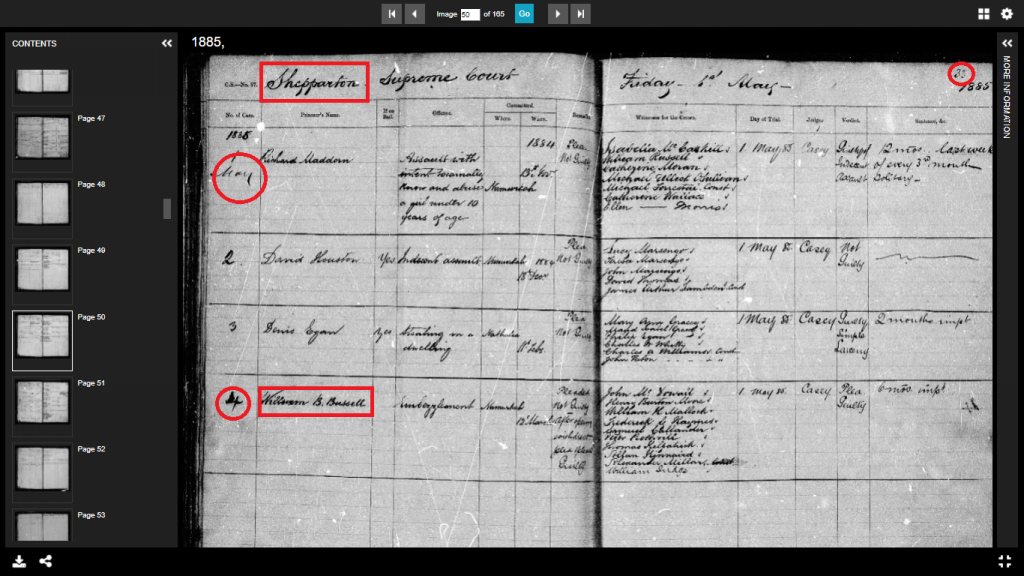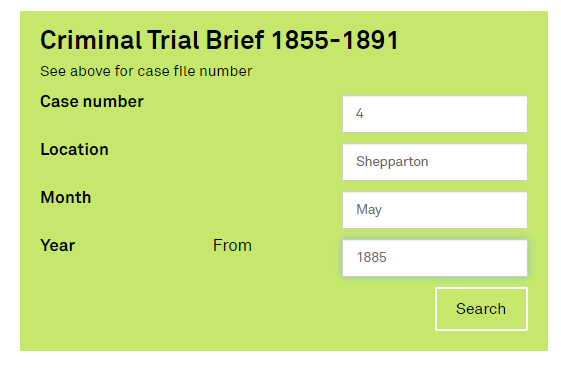Last updated:
What do I need to know?
To locate a Criminal Trial Brief you can search on this page, however you will need to first find the following information
- case number or criminal trial brief number
- name of the accused
- location of the trial
- month they were on trial
- the year the accused was tried or was scheduled to be tried.
There is no register for 1873. Contact PROV for details on how to search for 1873 briefs.
How do I search?
- Use Search Option 1 to locate a register of criminal trial briefs covering the year of interest. The registers have been digitised and can be viewed online, which means that you can browse them by year.
- Use the Step by Step instructions at the bottom of the page for guidance on how to navigate through the register and find an entry for the trial of interest.
- Use the details you have discovered by entering the information into the form at Search Option 2. This will enable you to locate the trial brief of interest, which you can order for viewing in the Reading Room.
About these records
These records consist of the documentation created by the State to prosecute individuals committed for trial on serious charges, known as indictable or capital offenses, from 1855-1891.
Indictable offences are the criminal offences that are prosecuted in the Supreme Court and the County Court (Prior to 1969 called the Court of General Sessions). Capital offences are those where the criminal may be hanged.
Next Steps
Useful links
What are in these records?
For each case you will find an accumulation of documentation. The range of specific documents found in and the consequent size of this accumulation will vary from case to case.
Criminal trial brief registers:
- name of prisoner
- criminal case number
- offence
- date of offence
- witnesses
- trial date
- judge
- verdict
- sentence
Criminal trial briefs:
- original depositions
- witness statements (known as depositions) made during the committal hearing and signed by the witness
- witness recognisances
- statement of the accused (if made)
- bail documentation (if granted)
- evidence tendered, including documents, very small sized items and, increasingly from the 1920s, photographs
- inquest deposition file for the victim (murder or manslaughter)
- prosecutor’s brief (although these were culled from most of the documentation for cases currently available for public inspection)
Transcripts are rarely, if ever, found in 19th and early 20th Century trial briefs. These appear more frequently in cases from the middle of the 20th Century.
Although criminal trial briefs are records created to document the prosecution of individuals committed for trial on serious charges, there may also be details of the actual criminal trials (where these proceeded) in detailed newspaper reports of cases, especially from the nineteenth and early twentieth centuries, which were the work of specialist newspaper court reporters who did not have access to court documents.
-
STEP 1
Use Search Option 1 to find registers covering years of interest.
STEP 2
In the early pages of the register, you'll find an alphabetical index to surnames. Browse through the index until you find the name of interest.
Next to the name you will find a page number (note that the page number will be found in the top right corner of each image from the register - it isn't the same as the image number you'll see in the left side margin; usually the image number is higher than the page number).
Now browse through the register until you come to the right page.

STEP 3
Once you've found the right page (see the page number at top right), note the following information:
- The location of the court (Shepparton)
- The month of the case (May)
- The number of the case (4)
- The year of the register (1885)

STEP 4
The final step to locate the trial brief of interest is to enter the details you've discovered into Search Option 2:

Material in the Public Record Office Victoria archival collection contains words and descriptions that reflect attitudes and government policies at different times which may be insensitive and upsetting
Aboriginal and Torres Strait Islander Peoples should be aware the collection and website may contain images, voices and names of deceased persons.
PROV provides advice to researchers wishing to access, publish or re-use records about Aboriginal Peoples
.jpg)